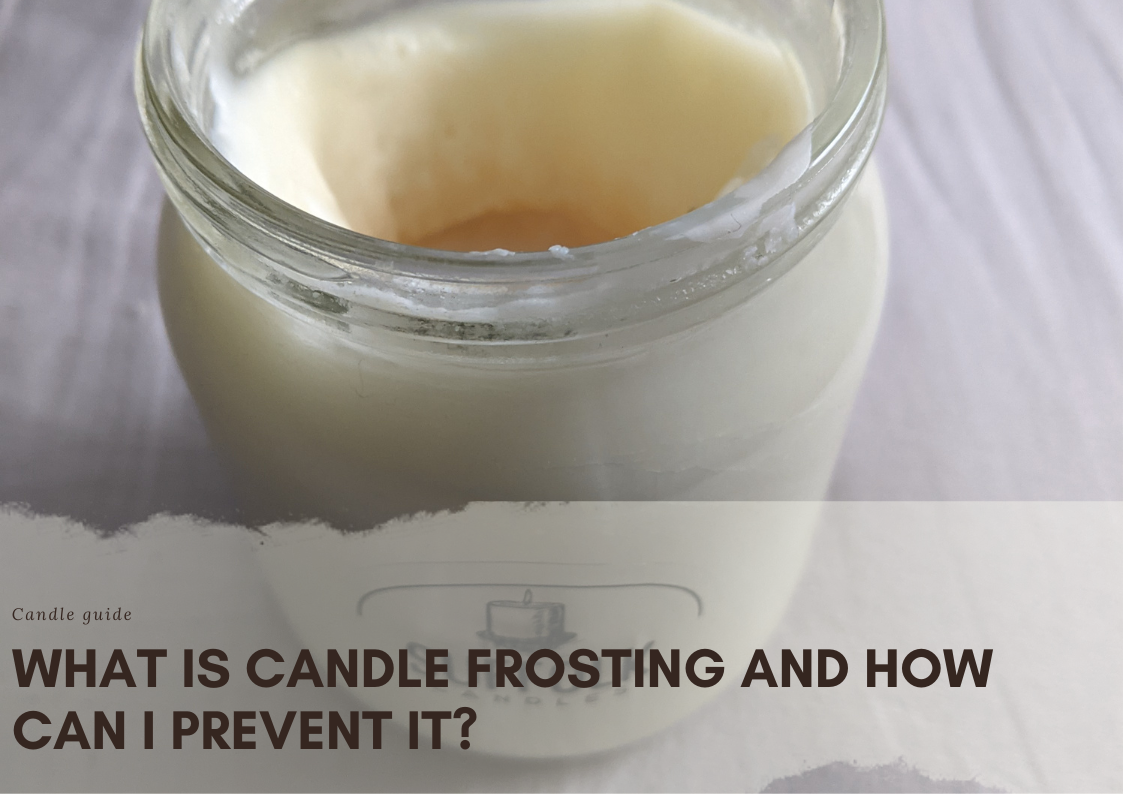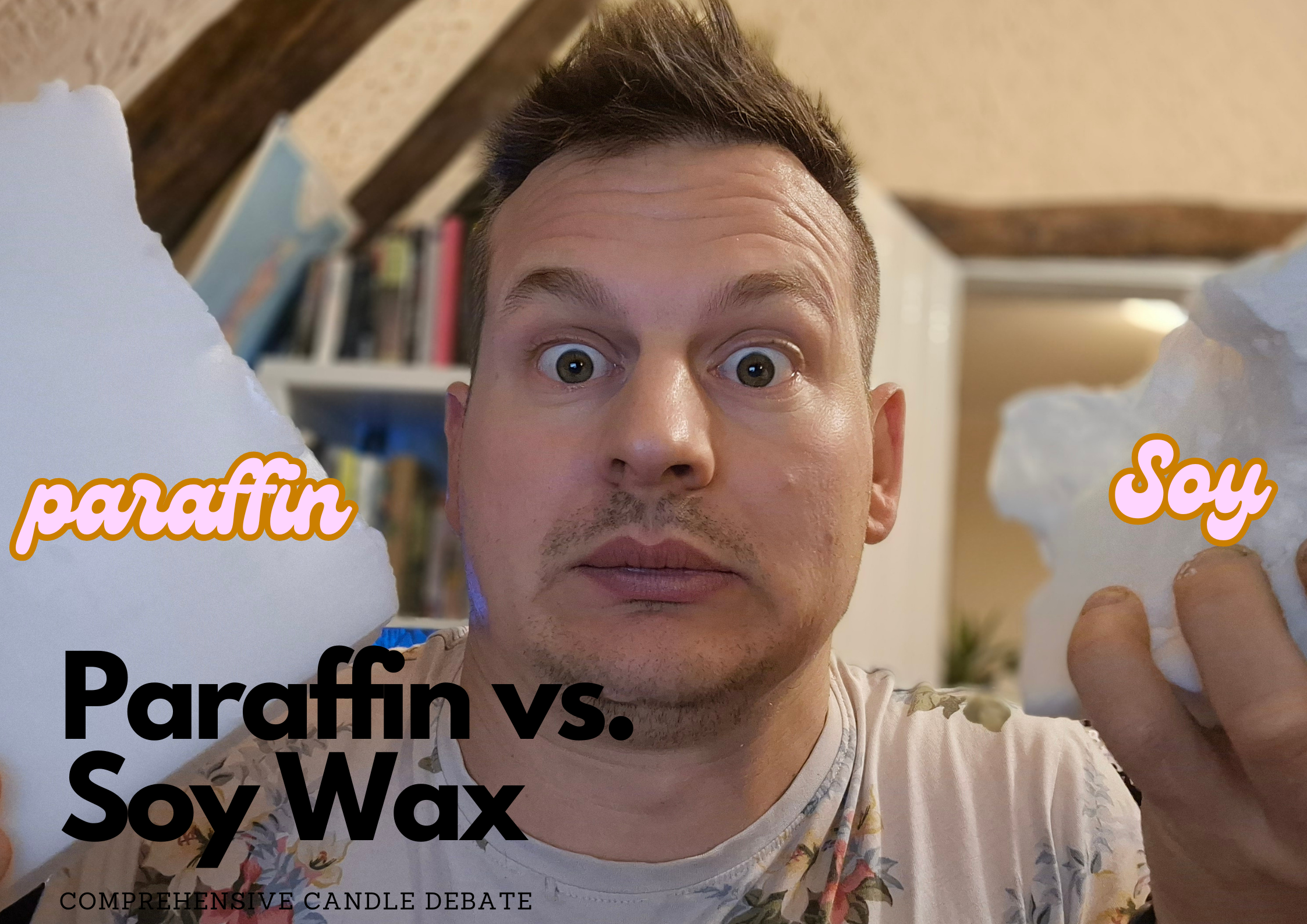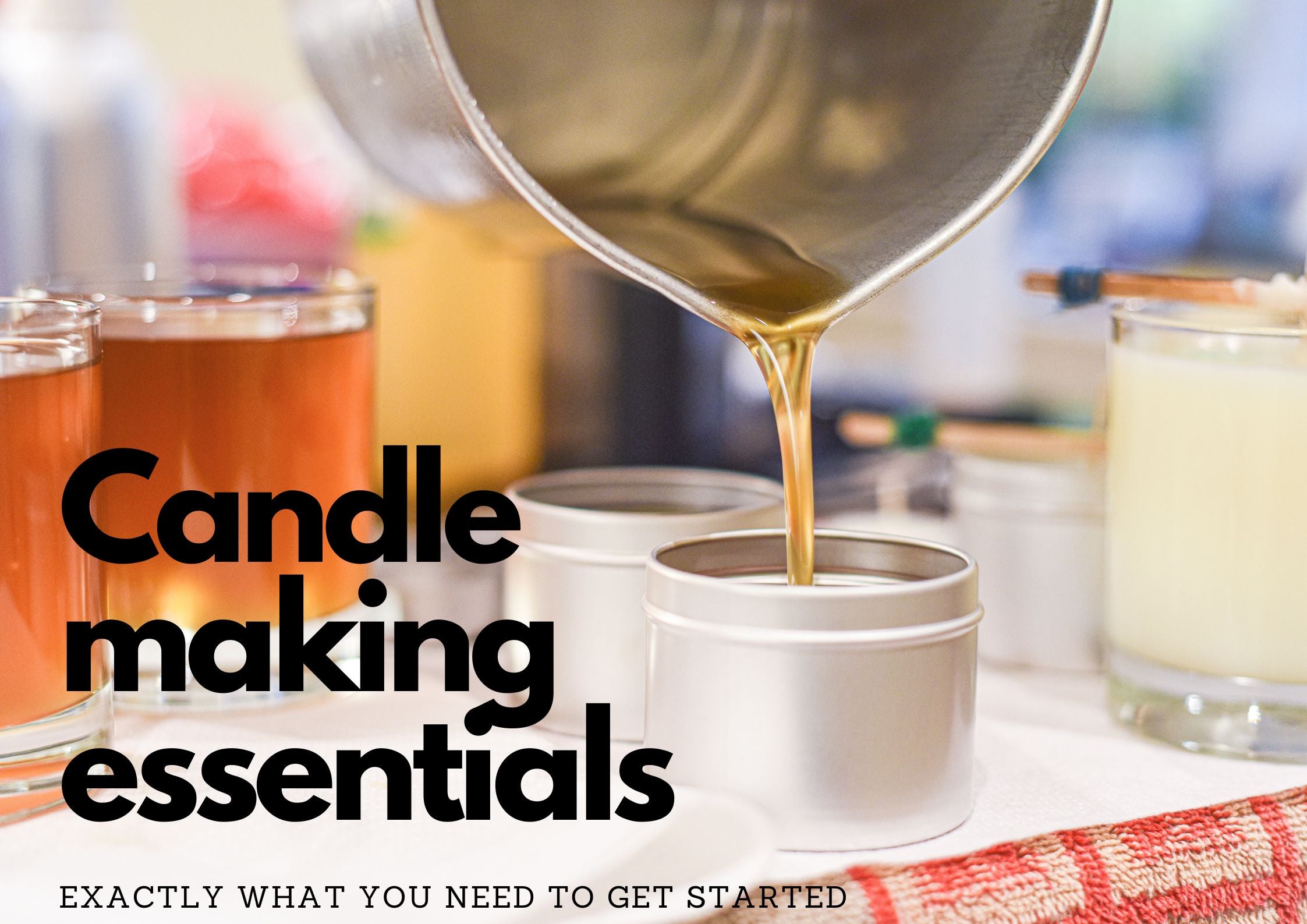What is candle frosting and how can I prevent it? ( Our Top 6 Candle Tips)
Sep 11 , 2022
We all want the perfect candle, one that not only burns and smells but also looks absolutely impeccable. So when we find white, crystalline discolouration on the sides and top of our candles, we are all discouraged from making more of them at home, even though this phenomenon called frosting is very common and can even trouble experienced candle makers if they don't take all the necessary precautions to avoid it
5 Key Points About Candle Frosting
-
Natural Occurrence: Candle frosting is a natural phenomenon that occurs on some wax candles, particularly soy and natural vegetable waxes.
-
Cosmetic Issue: It's primarily a cosmetic concern and doesn't affect the candle's quality, burn time, or fragrance.
-
Prevention Tips: To reduce frosting, store candles in a consistent temperature, opt for container candles, or choose waxes like paraffin or beeswax.
-
Aesthetic Choice: Candle makers can embrace frosting as part of their candle's design, using it to create an artistic or rustic appearance.
-
Removal Option: If desired, frosting can be gently removed from the candle's surface using a heat gun on low heat. However, this is optional and not necessary for candle functionality.
What is frosting?

Frosting, or blooming as others call it, is caused by a chemical phenomenon called polymorphism. This means that over time a compound takes on different forms (in this case crystalline) due to temperature changes. Such chemical processes take place in all candles made from natural waxes even if they are not visible to the naked eye, but they are most problematic in candles made from soy wax.
The good news about frosting is that it only affects the appearance of the candle wax, and it has no effect on the burning parameters of the candle.
Because waxes made from soy are prone to such discolouration, manufacturers often add various stabilizers to their waxes to prevent this. But there are several methods other than chemical intervention that can be used to minimize the risk of frosting during the candle making process. It is better to pay attention to these in time, because unfortunately the process cannot be reversed!
How to prevent it?

Cure the wax at a stable temperature
This is the simple answer, however there is a little bit of science involved!
Make sure that the wax is evenly cooled so that it does not crystallize. Store in a room where there is not a lot of heat fluctuation and the humidity is low. The soy wax should be heated to a temperature of about 180-185°F (or about 82-82°C) and allowed to cool slowly to a temperature of 140-160°F (or about 60-71°C) before pouring. This cooling is very critical, and it is here that the wax must be allowed to cool slowly and evenly. If your kitchen has a door, close it and don't open any windows during this time to keep the weather as stable as possible.
Care should also be taken to dry the candle under similarly uniform conditions after pouring. Under no circumstances should you place it on a windowsill or leave it in the kitchen where cooking and ventilation cause the temperature to vary unevenly and rapidly!
Another good tip is to use a wire rack. This helps free air flow and ensures that the bottom of the candle will cool down as quickly as the rest of the candle.
Preheat the candle holder
Preheat the candle containers to a temperature of between about 110-125°F (or around 43-51°C) so that the wax does not get heat shock when it meets the cold container. You can do this preheating in two ways: you can pour hot water into the pot or you can use a heat gun. If you use the water solution, take extra care to wipe the inside of the pot dry, as the wax will not stick to wet spots. If you want to be extra precise, use a laser thermometer, which will tell you the exact temperature of the inside wall of the pot.
Stir gently the melted wax
If you are careful enough with the liquid wax, it will form a few air bubbles. These bubbles give the crystals an excellent adhesion point, so their presence increases the risk of frosting, therefore handling the raw materials with care can go a long way in preventing blooming.
Over time, all natural wax develops frosting
When making candles from natural wax, time is unfortunately not on our side, so use the finished masterpieces as soon as possible. If you are giving a loved one a homemade candle for an occasion, time the making of the candle so that it is not too far away from the moment of gift giving, and let the recipient know that the candle was made to be used in the near future.
Make sure to use the right amount of additives
If you want to add essential oils, fragrance oils or colorants to your candle, make sure you use the right proportions of these additives. Using too little of them will not achieve the desired effect, but adding too much to the wax can lead to problems with frosting, as well as cracking the surface of the candle. It is a good rule of thumb to follow the recommendations given by the manufacturers.
Use UV inhibitor
Besides uneven cooling, UV radiation from sunlight can also accelerate the formation of frosting in candles. This can be slowed down by a special additive called UV inhibitor. Since most of us make candles at home to make them without additives, this solution may seem a little backward to some of us, but its effectiveness is beyond doubt. If you don't want to use such an additive, a simple solution is to put your finished but unused candles into a cupboard to cover it from sunlight.
What can I do if frosting forms in my candle?
If we used a non-transparent container, there is every chance that we will not even notice the formed crystals.
If the frosting appears on the top of the candle, you can use a heat gun to carefully melt the formed crystals back so that the surface is smooth again.
In reality frosting is not a serious problem as it only affects aesthetics. If we are careful when making it, we have every chance of using up our candle before it starts to show visible signs of crystallization. If we are still afraid of this phenomenon, perhaps the best thing to do is to use natural-coloured, white waxes, where the side effects of the frosting are so not obvious.
FAQ: Candle Frosting - Causes and Prevention
- What is candle frosting, and why does it occur?
- Candle frosting is a natural occurrence in candles made from certain waxes, like soy or natural vegetable waxes. It appears as a white, powdery layer on the surface of the candle. It happens due to the crystalline structure of the wax and temperature fluctuations during storage.
- Does candle frosting affect the quality of the candle or its burn time?
- No, candle frosting is purely cosmetic and does not affect the candle's quality or burn time. It's a natural characteristic of some waxes and does not impact performance.
- Can I prevent candle frosting?
- While you can't completely eliminate candle frosting in some waxes, you can take steps to minimize it:
- How can I prevent or minimize candle frosting?
- Store candles at a consistent temperature: Fluctuations in temperature can lead to frosting. Keep your candles in a cool, consistent environment away from direct sunlight and drafts.
- Choose the right wax: Some waxes are less prone to frosting. If you're concerned about frosting, consider using paraffin or beeswax, which tend to have less frosting than soy wax.
- Use a heat gun: If you want to remove frosting from the surface of your candles, you can carefully use a heat gun on low heat to gently melt the top layer and create a smoother appearance.
- Opt for pre-poured candle containers: Candles poured in containers are less prone to frosting because the container insulates the wax from temperature fluctuations.
- Is candle frosting a sign of a lower-quality candle?
- No, candle frosting is not an indicator of a lower-quality candle. In fact, it often occurs in high-quality, natural wax candles. It's simply a characteristic of the wax and doesn't impact the candle's performance.
- Can I use frosting as a design element in my candles?
- Yes, some candle makers intentionally create frosting for an artistic or rustic look. You can embrace frosting as part of your candle's aesthetic.
- Does frosting affect scented candles or the fragrance throw?
- Candle frosting typically doesn't affect the scent throw or the performance of scented candles. The fragrance is released when the candle burns, regardless of the frosting on the surface.
- Can I remove frosting from candles that have already frosted?
- Yes, you can remove frosting from the surface of candles using a heat gun on low heat. Be careful not to overheat or melt the candle. Gently heat the surface until it becomes smooth.
Remember to educate your customers about candle frosting so they can appreciate it as a natural characteristic of certain waxes and understand that it doesn't impact the candle's quality or burn performance.





